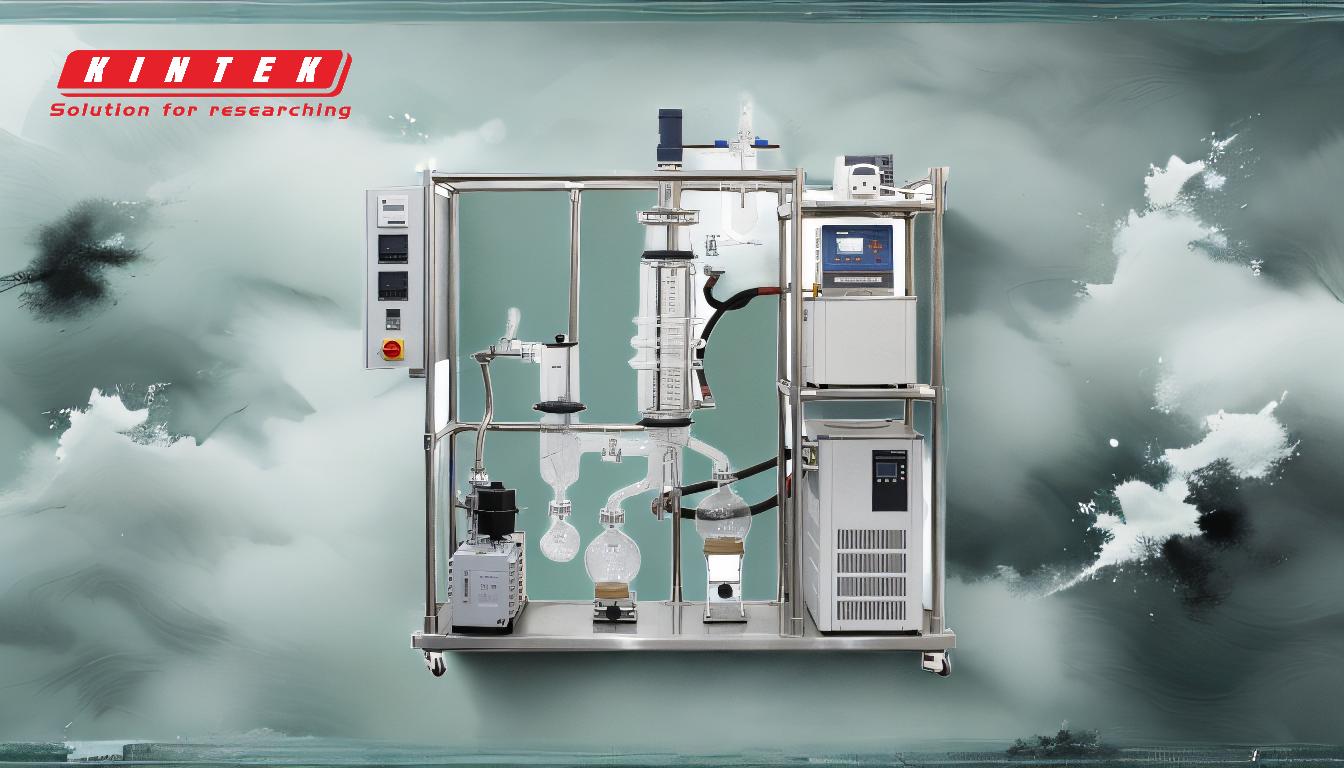Vacuum distillation is a specialized separation technique used to purify or separate compounds with high boiling points or those prone to thermal decomposition. By reducing the pressure inside the distillation apparatus, the boiling points of the compounds are significantly lowered, allowing them to evaporate at much lower temperatures than their standard boiling points. This process involves heating the mixture to create vapor, which is then condensed and collected as a purified distillate. Vacuum distillation is particularly useful for heat-sensitive materials and high-boiling-point compounds, ensuring efficient separation without degradation.
Key Points Explained:

-
Reduction of Pressure:
- Vacuum distillation operates at pressures below atmospheric pressure.
- Lowering the pressure reduces the boiling points of the compounds in the mixture.
- This is based on the principle that the boiling point of a liquid decreases as the surrounding pressure decreases.
-
Lower Temperature Operation:
- By reducing the pressure, the distillation process can be conducted at significantly lower temperatures.
- This is crucial for compounds with high boiling points (above 392°F or 200°C) or those that decompose at high temperatures.
- Lower temperatures prevent thermal degradation, preserving the integrity of the compounds.
-
Vaporization and Condensation:
- The mixture is heated under reduced pressure, causing the components to vaporize at their lowered boiling points.
- The vaporized components are then passed through a condenser, where they are cooled and reliquefied.
- The condensed liquid is collected as the distillate, which is a purified form of the desired compound.
-
Separation of Components:
- Vacuum distillation allows for the separation of components with similar boiling points that would otherwise be difficult to separate at atmospheric pressure.
- The process is often combined with fractional or steam distillation to enhance separation efficiency, especially for complex mixtures like aromatic compounds.
-
Applications in Purification:
- This technique is widely used in industries such as petroleum refining, chemical manufacturing, and pharmaceuticals to purify heat-sensitive materials.
- It is also employed in laboratories to obtain high-purity samples of compounds that decompose at high temperatures.
-
Advantages of Vacuum Distillation:
- Prevents thermal decomposition of sensitive compounds by operating at lower temperatures.
- Enables the separation of high-boiling-point compounds that cannot be distilled at atmospheric pressure.
- Reduces energy consumption compared to high-temperature distillation processes.
-
Equipment and Setup:
- A vacuum distillation setup typically includes a distillation flask, a vacuum pump, a condenser, and a collection flask.
- The vacuum pump creates the reduced pressure environment, while the condenser cools and reliquefies the vaporized components.
By understanding these key points, a purchaser of equipment or consumables can make informed decisions about the suitability of vacuum distillation for their specific needs, ensuring optimal separation and purification of compounds.
Summary Table:
| Key Aspect | Description |
|---|---|
| Reduction of Pressure | Operates below atmospheric pressure, lowering boiling points of compounds. |
| Lower Temperature Operation | Prevents thermal degradation by operating at reduced temperatures. |
| Vaporization & Condensation | Vaporizes compounds at lower temps, condenses, and collects purified distillate. |
| Separation of Components | Separates compounds with similar boiling points efficiently. |
| Applications | Used in petroleum, chemical, and pharmaceutical industries for purification. |
| Advantages | Prevents decomposition, reduces energy use, and handles high-boiling compounds. |
| Equipment | Includes distillation flask, vacuum pump, condenser, and collection flask. |
Discover how vacuum distillation can optimize your purification process—contact us today for expert guidance!













